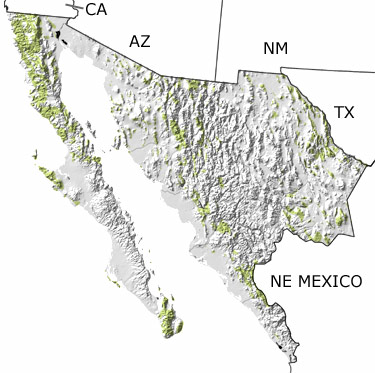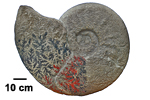Paleontology and geologyFor most of the Cretaceous, Northwestern Mexico was composed of basins and highlands. The land was covered in forests, swamps, and wetlands, which hosted turtles, lizards, crocodilians, and many different dinosaurs, such as ceratopsians, hadrosaurs, dromaeosaurs, tyrannosaurs, and ankylosaurs. Freshwater gastropods, bivalves, and ostracods, as well as gar, bowfin, and other types of fish thrived in the many lakes and rivers. In coastal lagoons and mudflats, sea water evaporated from time to time, leaving deposits of gypsum and salt, while farther out to sea, corals and large bivalves called rudists built up large reefs. The shallow to deep waters were also home to gastropods, echinoderms, ammonites, bryozoans, foraminifera, radiolarians, and other types of bivalves. By the end of the period, subduction added the last of the volcanic islands and slices of oceanic crust to the continent, and most of the region was uplifted. Volcanoes erupted lava and ash, magma pushed up underneath the surface, and many rocks were folded, faulted, and altered. |





